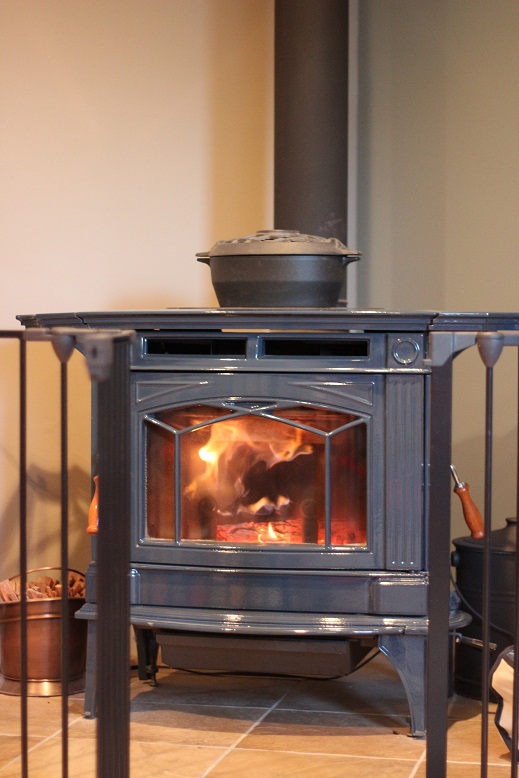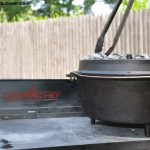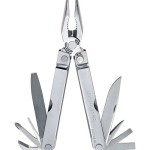With the wood heating season coming to an end it is time to talk about the economics of heating with wood.
My central heating system is fuel oil (Yes, it kind of stinks). I’ve been keeping good records since I bought my house back in September 2004. When I was heating only with oil I used 800 gallons of oil every year without fail. With the current price of fuel oil 800 gallons would run me right around $3200. Now since I installed the stove I use 550 gallons per year, that runs me right around $2200 a year. That runs to $1000 a year back into my pocket. Now the stove is a lot of work but it is a tangible return on sweat equity. Being that my stove ran me $3500 for the full install after my Federal Tax Credit for High Efficiency Bio-Mass Stoves, I’ve already passed my break even point on the stove.
Other costs associated with the stove included the cost of my chainsaw. The saw cost $400 and runs another $30-40 in oil, blades, and some maintenance. I split by hand but a maul, sledge, and some wedges set me back another $50.
I don’t have a truck so I needed to get a trailer to pick up wood. I found a good one on Craigslist for $400. It needed a bit of TLC but nothing major and has given me a few years of trouble free service.
I also needed a cleaning kit but it was nice and cheap and only cost $25.
That is pretty much all the costs associated with my stove that I can think of. Even though it was pretty costly on the front end the stove now puts money into my pocket every year. I can’t imagine being without it. The peace of mind I get from being able to keep my little family toasty warm all with my own sweat is what keeps me heating with wood. Plus nothing warms you to the bone like a wood stove!
If you like what you read here on The Backyard Pioneer please consider subscribing to receive e-mail notifications or check me out on Facebook, Twitter, YouTube, or my RSS Feed. All of these are available on the top right of this page. -Thanks for reading, Mike
Affiliate Disclosure: I am grateful to be of service and bring you content free of charge. In order to do this, please note that when you click links and purchase items, in most (not all) cases I will receive a referral commission. Your support in purchasing through these links enables me to keep the content train rolling







It’s a beautiful stove – what brand is it, if you don’t mind?
It is a Hampton H300. Thanks for stopping by!
You must have been reading my mind because I was also going to do a similar post.
We have had a woodburning stove since our first winter here. It has paid for itself within the first year. My husband and father-in-law installed it. I think that was around $600 for the supplies. Here on the Colorado Prairie, we don’t have building codes, so that wasn’t an issue. We used an old woodburning stove the first year and the replaced it with a new more efficient one. This new one was about $700, or actually $1000 and then the 30% tax credit.
We bought a chainsaw which was about $150. We already had a pickup. We also need a chimney cleaner. I think that was about $40.
Every year, it costs us approximately $100 to heat the house. We need chainsaw fuel, a new blade, new fireplace gloves, a new dustpan, etc.
This year, there was only one week that we needed to use the furnace. (We had a blizzrd. The snow melted and then froze, so our whole woodpile was iced in.) Our furnace does not have a thermostat, so we don’t use it if we’re using the stove. I don’t know how much that cost for that week. We already had oil in the tank.
We also had some very cold weather for a week or so. We used the electric space heaters during this week, in the areas of the house that are furthest away from the woodburning stove. I think my electric bill was about $30 higher that month.
You can go really wrong with a woodburning stove, too. If any of your readers are considering one, I would advice you to read Back to the Land by Elinor Agnew. She talks about how in some cases the woodburning stove could be disastrous. It was a learning curve for us, too. I think we finally figured out how to use it this winter, our fourth one with it.
I’m amazed at your figures and your “back into my pocket numbers”. Our situation is that we just plain can’t afford heat. Our woodburning stove is a blessing because we don’t like freezing either. A former owner of our house said it costs about $3000 per year to heat. So if he’s right, we’ve saved a LOT. That would be our biggest bill with the exception of our mortgage.
I talk about wood stacking and my adventures with it here… http://www.homesteadfailure.blogspot.com/search/label/Wood%20For%20the%20Woodburning%20Stove
Thanks for the response, it is always nice to hear from a fellow wood burner. My oil burner is also my source of hot water, so even during the Summer I’ve got to have the burner running. I want to get a tankless hot water heater so I can cut further into my heating bills.
Keep burning and thanks for stopping by!
Hi Mike! I’m in Australia, where we don’t have the same cold issues that you do in the US (no snow or even frosts where I live!), but I do have a wood heater and I love it.
I burn maybe a ton or so of firewood a year, only over the coldest months of the year. It’s mid-May now and we haven’t even lit it once yet (that’s equivalent to mid-December in the US).
I’ve found I can scavenge all the wood I need, between trees falling on my property or on friends’, plus a bit of scrounging (hardwood fence palings, cut down and split, make great kindling!).
I’m off to explore a bit more of your blog…
Thanks for stopping by. My secret kindling source is the Molding factory down the road from work. They dump out all sorts of interesting burnable stuff.
We are connected on Facebook so I decided to come on over and check out your blog. 🙂 I grew up in my teen age years with a woodburning stove in our little house as our sole heat. It also served as a cooking stove many times. When my husband and I bought our little house in the city we made sure it had a wood stove in it. We have lived here for over 18yrs and have only once the first year turned on our heater. We usually get our own wood so it might cost us $50 to $100 for gas and supplies and such. We go through 2 cords a year. We do live in the mild climate of the Portland Oregon area so we use it mostly between November and March. I do not use mine for cooking because it is in the living room and not very convenient. However I could if I needed to for sure. I would never own another house without a wood stove! Thanks for sharing all your learning with all of us.
Anderson Hippy Homestead
I had experience with the old, BIG wood stoves from the 60s with a manual damper. Those were easy to use in my opinion. I had a Lopi wood stove installed in oct 2012. Propane just got to expensive to run my central heat with it. This Lopi stove has a built in damper, all I control on it is the air flow on the bottom if the stove. I used this stove almost 3 months and had a chimney fire. I was sitting near it when it started and shut off air flow immediately. I was lucky. If I had been upstairs asleep or not home, it would have been disastrous. I work night shift and i was burning the stove very slow, no flame, smoldering, while at work just to keep the pipes from freezing. I didn’t know this builds kreosote. Do not burn it slow and long without burning it hot for about 20 – 30 mins when you start up the fire again. Burning it hot destroys the Kreosote.
I had a problem with my stove initially as well. I had a build up of creosote that clogged the grate on top of the chimney, it caused smoke to come back into the house. I stopped with the smolders and have gone to burning hotter fires. My wife is a stay at home Mom now and she keeps the fire going all day. I throw a log on before bed and that keeps the house warm til about 2am. When I get up for work I set the fire up and my wife lights it when she gets up. This has worked pretty well for us as it is working out as a nice balance between saving money on fuel oil but gives me piece of mind when it comes to creosote build up.
Thanks for the comment and thanks for reading!